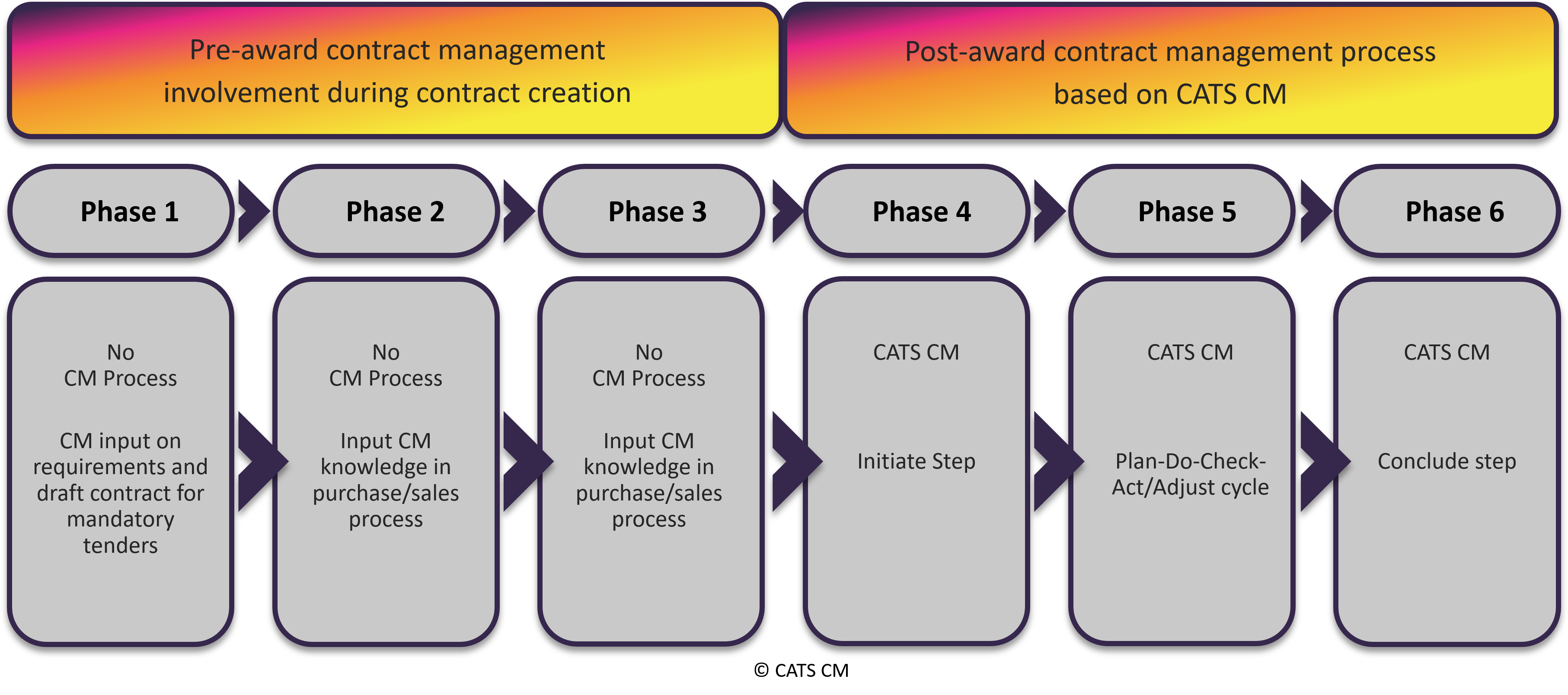With the knowledge from my previous blogs, it is now time to introduce the CATS CM® methodology in this blog. In short, contract management is the realization of contract objectives. CATS CM® is applied to achieve these pre-determined results. The contract management methodology has been designed based on four pillars. This part of the blogs series offers a concise presentation of these foundations.
Let’s start with a more thorough definition of contract management:
Contract management is the achievement of intended contract objectives by proactively monitoring the fulfillment of all contractually established responsibilities, obligations, procedures, agreements, conditions and rates, resolving all ambiguities, contradictions and loopholes, managing all contract-related risks, and implementing all desired changes in the contract, during the execution or performance phase.
As the definition indicates, this is about contract management in the execution phase. As I already described in my previous blog, optimal and successful execution of the contract will never be achieved when this process has not been established in the contract creation.
When this is related to the six phases of the CATS contract life cycle, it looks like this:

The four pillars of the CATS CM® methodology
The actual application of the CATS CM® methodology starts from phase four in the CATS contract life cycle. The methodology is based on 4 pillars:
- The distinction between the Work To Be Done (WTBD) and All Other Contract Matter (AOCM) within a contract.
- The roles that are created due to the contract and which must be established to ensure successful contract performance.
- The Contract Management Essentials (CM Essentials), the subjects on which the contract manager should focus.
- The contract management process, consisting of six steps, and its implementation through the use of contract management scenarios.
Below, you will find a concise explanation of each pillar. The next blogs in the ‘Contract Management with CATS CM® in a nutshell’ series will offer more details about each pillar.
Work To Be Done and All Other Contract Matter
Every contract includes a description of the Work To Be Done and All Other Contract Matter. The distinction between the two in CATS CM® forms the foundation for assigning the roles of contract manager and realization and verification manager. The latter role is often combined with the role of service or project manager within the organization.
Roles
For an optimal execution, a contract requires at least three different roles: contract owner, contract manager, and service manager.
Contract Management Essentials
Every role has its own focal points. The Contract Management Essentials are the ten most important areas on which the contract manager needs to focus. The CATS CM® methodology helps to realize the approach of every Contract Management Essential, based on the contract and the organization, without infringing on the manageability of the process.
Contract management process and contract management scenarios
The contract management process consists of six fundamental steps: Initiate, Plan, Do, Check, Act (Deming’s quality circle), and Conclude. The contract management scenarios offer the opportunity to tailor the specific steps to the type of contract (and thus per type of collaboration).
This is the eight blog of the series ‘Contract Management with CATS CM® in a nutshell’, in which we guide you through an overview of our vision and methodology. Do you have any questions for Linda Tonkes and Gert-Jan Vlasveld, the authors of the book Contract Management with CATS CM® version 4? Then please send an email to questions@cats-cm.com!